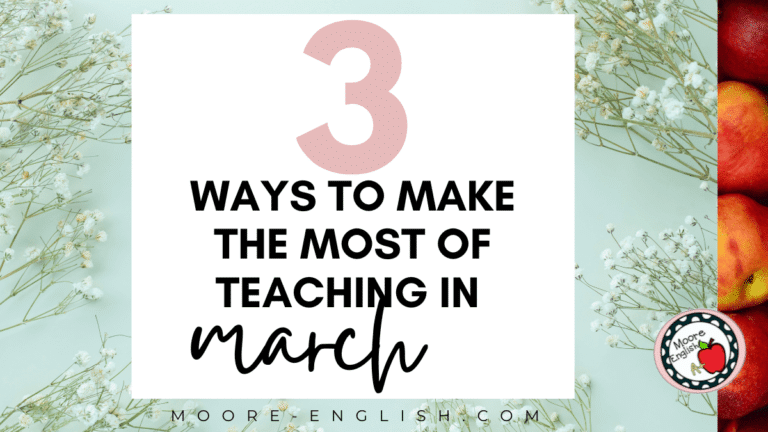As a new teacher, I rarely abridged or modified a text. In general, I was horrified at the prospect of teaching students anything less than the full-throated, original version of a text. How dare anyone offer a text that is anything less than its complete self?
Well, I got over that indignation pretty quickly.
Over the years, I’ve become adept at interpreting these 4 surefire signs that it’s time to abridge and/or modify a text.
This post this post may contain affiliate links. Please read the Terms of Use.
Keep it Legal
As a new teacher, the only time I abridged or modified a text as when a student’s IEP or 504 called for this accommodation.
Indeed, if a student has language in their IEP or 504 that calls for a less rigorous text, then teachers are legally obligated to abridge and/or modify the text.
Depending on your school setting, there may also be requirements to modify, abridge, or translate a text for English Language Learners.
In either situation, seek out teachers, librarians, and counselors to help you make appropriate modifications or accomodations. As I look more into AI tools, it seems like AI may also be an option for making speedy and accurate changes in reading level.
Skill Building and Time Management
As a veteran teacher, when I abridge or modify a text, it is often because we’re focused on skill building and/or I’m pressed for time.
- First, when students are working on a tricky skill (like making inferences), it’s important that they work with a text that is not intimidating. In situations like this, your focus is on practicing the skill rather than deciphering a dense passage.
- Second, when you’re pressed for time, you may choose to modify or abridge a text. There’s also no shame in making this choice! Sometimes it’s better to modify or abridge a text and spend more time discussing it rather than pushing through a complex passage.
Abridge with Your Gut
Finally, sometimes I abridge or modify a text because my gut is telling me to. That may be frustrating advice, but your teacher gut knows your kids, knows your classroom, knows your goals, and knows the right thing.
At the end of the day, make the right choice for your students. If that’s abridging and modifying a text, then go for it!
When I’m setting out to abridge or modify a text, here are some questions and tips I consider.
- What aspect of the text makes me want to abridge or modify?
- Is the vocabulary challenging? What grade-level best describes the text?
- Are there any particular allusions that seem especially challenging or worthy of modification?
- Do you need to alter the structure of the text? Would additional paragraph breaks help?
- Is the text a translation? Has the translation caused a struggle?
- What about the punctuation?
My Favorite Abridged and Modified Titles
Over the years, I have taken the time to abridge and modify several texts. When I began abridging and modifying text, I started with Shakespeare. In particular, some of the bawdy scenes in Romeo and Juliet or the Porter scene in Macbeth motivated me.
- Macbeth
- Beowulf
- “Berenice”
- The Odyssey
- Julius Caesar
- “Winter Dreams“
- The Great Gatsby
- Romeo and Juliet
- “To Build a Fire“
The more often you practice modifying and abridging a text, the more comfortable you will become. In particular, I now know exactly what I want an abridged or modified text to look like. For example, I prefer to have the text on one side of the page and guiding questions on the other. More importantly, there’s really no wrong way to start abridging or modifying a text. Sometimes the best learning comes from practice!












